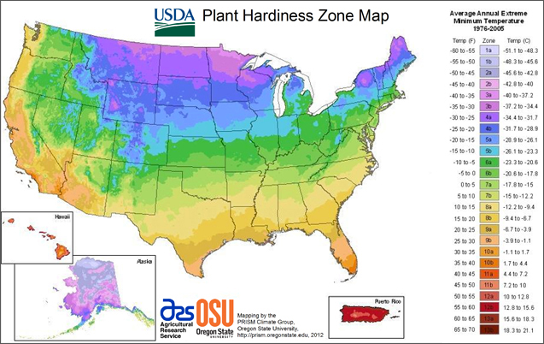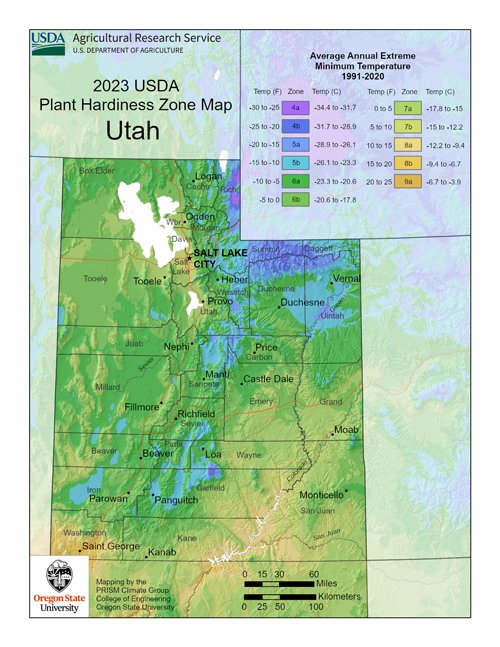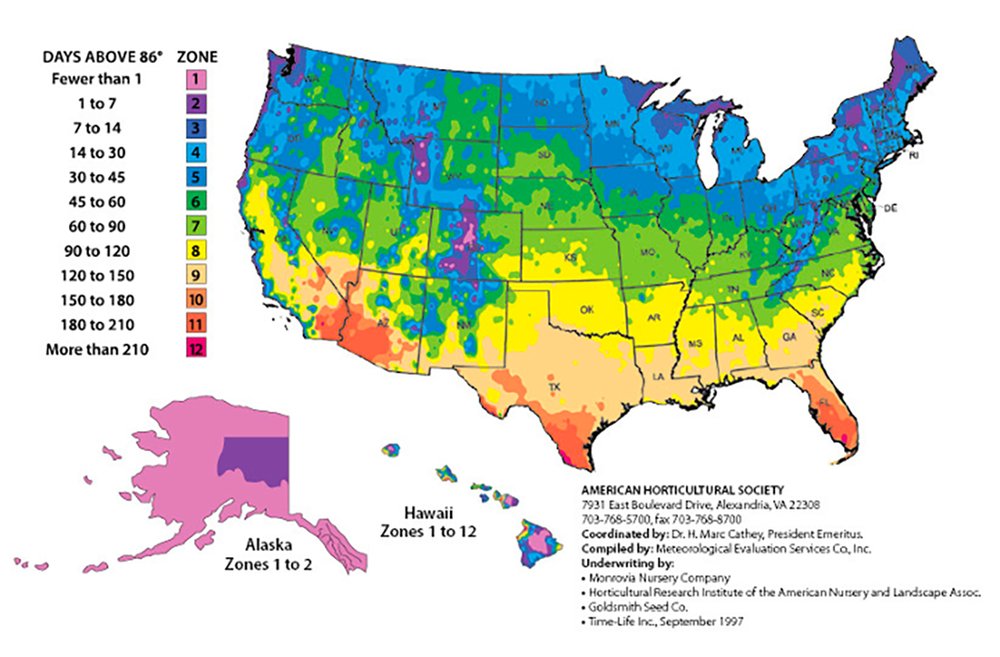USDA Plant Hardiness Zones and AHS Heat Zones
By Emily Rose Alworth, Horticulturist
The USDA Plant Hardiness Zone map divides the United States into 13 broad geographic zones based on average annual extreme temperature minimums from the past 30 years. This map is the American standard for assessing if a plant is hardy and able to survive year-round in a location. It is a commonly used tool for determining what types of plants are likely to overwinter outdoors.


The American Horticultural Society developed the AHS Heat Zone map based on the average days with temperatures at or above 86 °F. The zones range from Zone 1, with less than 1 heat day on average per year, to Zone 12 that experiences over 210 days of 86°F or higher temperatures. These high temperatures can cause physiological damage to intolerant plants that cannot adapt to excess heat. Conversely, some plants may survive the cold but may languish with insufficient heat.

It is important to consider the heat needs and requirements of a plant as it may perform vastly different in Park City vs Salt Lake City, even if it is hardy in both places - see Utah Hardiness Zone map.
Using the hardiness and heat zones for your area can be a great starting point for choosing plants, but is not always a definitive guide for every plant that can survive in a particular location. Additional environmental factors can provide a more complete picture of the gardening possibilities for an area. Consider the frequency and duration of elements such as temperature extremes, precipitation, and sunlight to better understand a potential plant’s success in a specific space. Many gardeners are able to push the limits of plants by creating and using existing microclimates that allow for plants to grow in a zone that doesn’t correlate with their recorded hardiness.